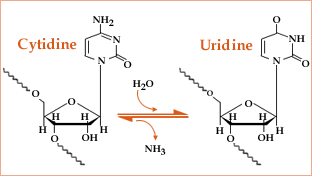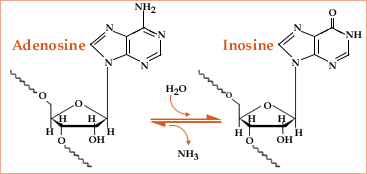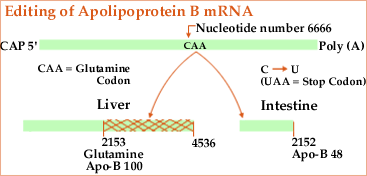RNA EditingRNA editing has been observed in mRNA, tRNA and rRNA. It has been detected in mitochondria and chloroplasts and in nuclear encoded RNAs but as yet not in procaryotes. RNA editing can be divided into two categories. In one, called insertion/deletion RNA editing, nucleotides are inserted or deleted. The best known example occurs in mitochondrial mRNAs of trypanosomes, a kind of protozoan. In this case, a number of U nucleotides are inserted or deleted to create the translatable mRNAs. Specific small RNAs, guide RNAs interact with the mRNA to define the position of editing. |
|||||
|
|||||


